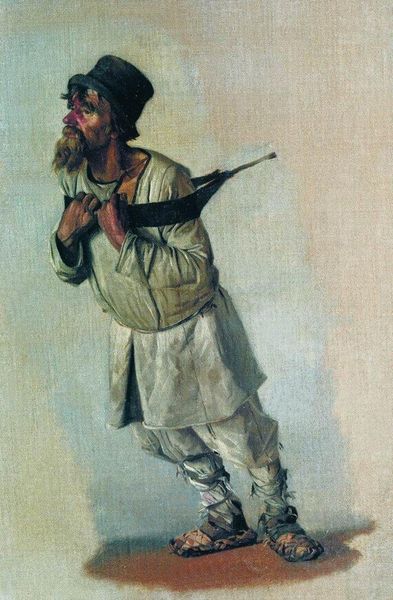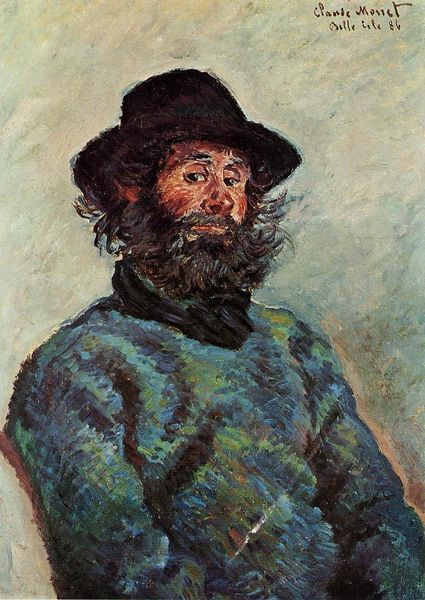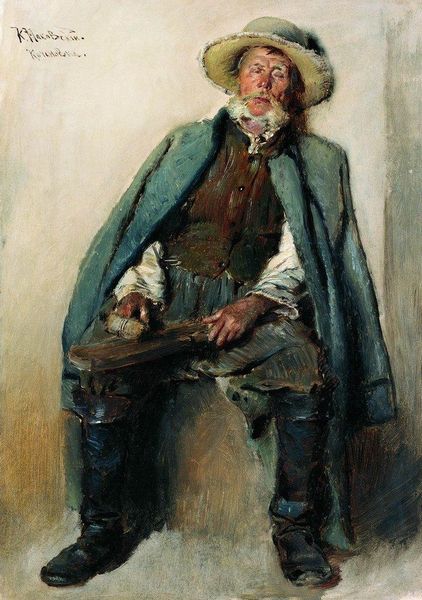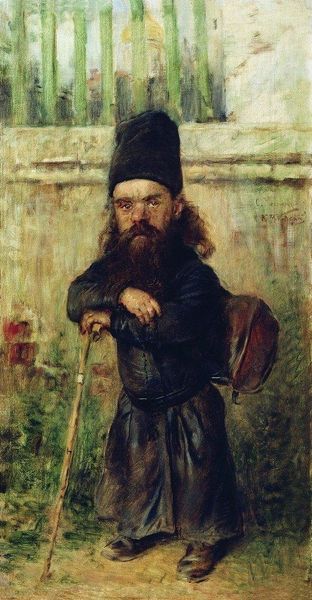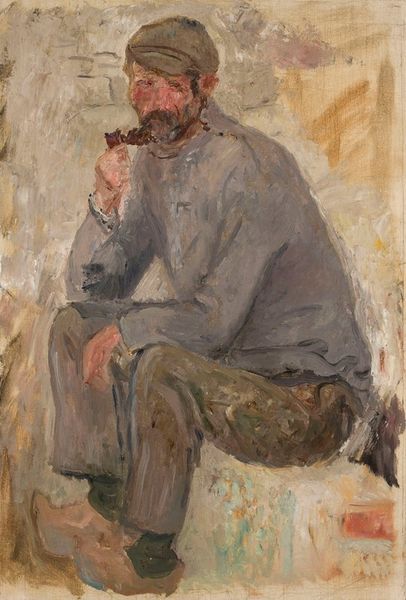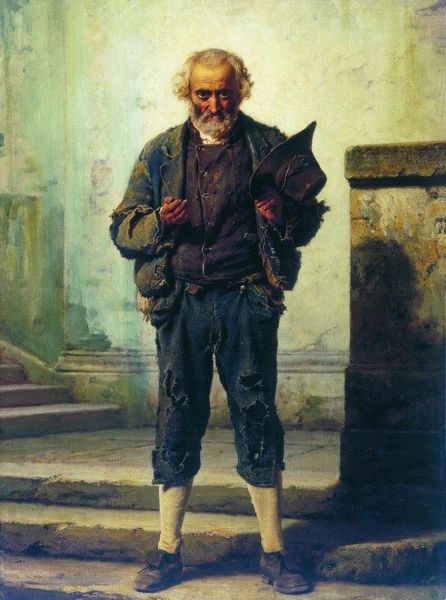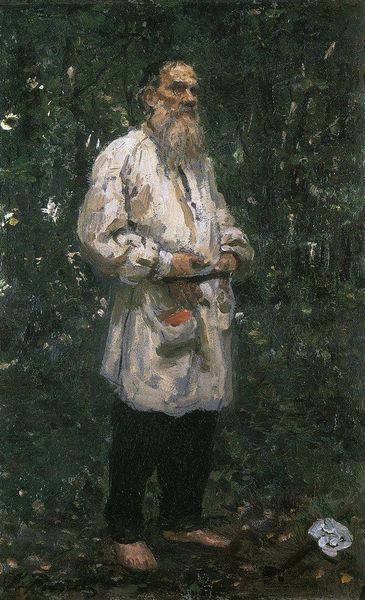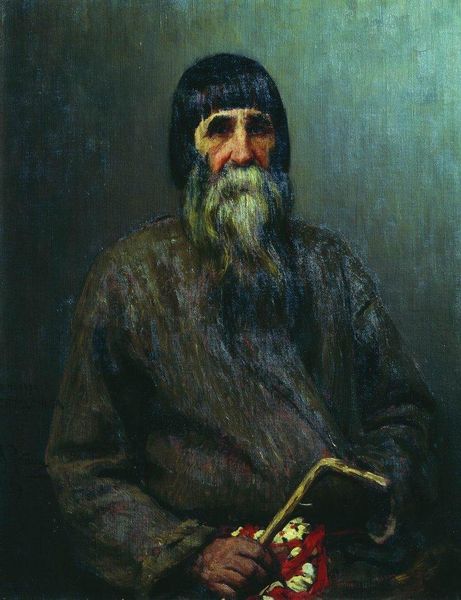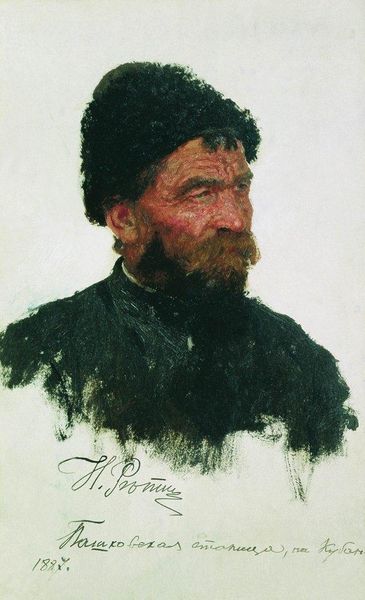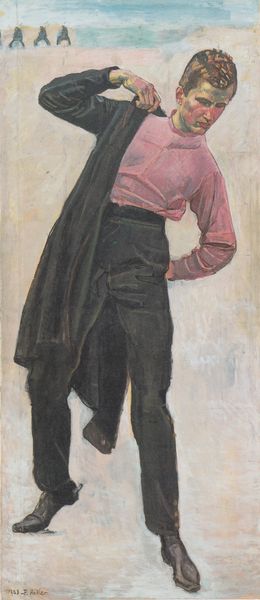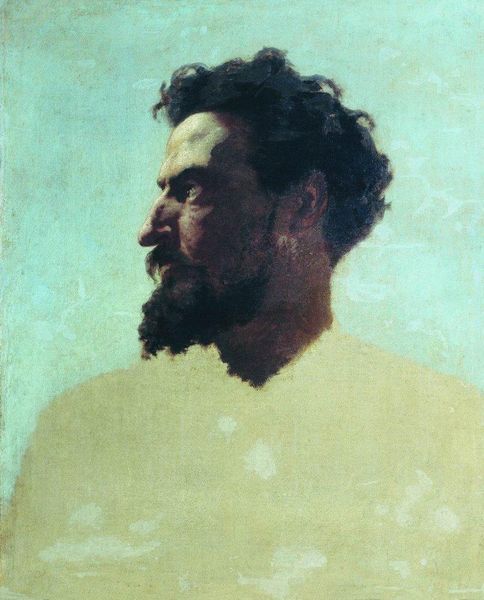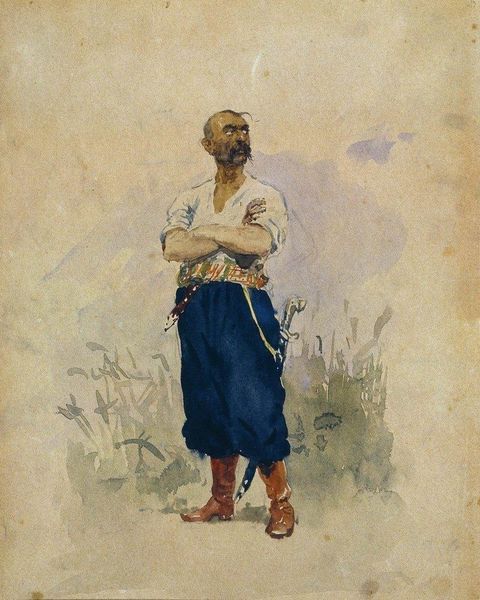
Copyright: Public domain
Editor: This is "Cossack," an oil painting by Konstantin Makovsky, created around 1875. The subject’s gaze is really striking. He looks like he's assessing the viewer. How do you see this painting, considering its historical context? Curator: Makovsky painted this during a period of intense interest in Russian national identity. The Cossacks held a powerful position in Russian and Ukrainian history, both admired and feared as frontier warriors and symbols of freedom. It's worth asking *why* this particular image of the Cossack was valorized. What purpose did it serve? Editor: So, it's not just a portrait, but also a statement about Russian power and culture? I'm also curious about Makovsky's decision to paint this subject, not in battle, but in a very common style. Curator: Exactly. Makovsky was known for his grand historical paintings, but also his portraits. Depicting the Cossack in simple clothing and with such a direct gaze elevates him to an almost iconic status. There’s a certain romanticism present, typical for art that seeks to solidify a sense of national pride. Think of other paintings of the period, what common threads do you see? Editor: I hadn’t considered the romanticized aspect so strongly. The straightforward presentation made me see it as pure realism. It’s fascinating how a work of art can participate in shaping and mythologizing national identity. Curator: And that tension – the seeming "realism" masking the underlying agenda – is what makes it so interesting to analyze within a larger socio-political context. It reminds us that art is never neutral, especially public art. Editor: Absolutely! I now view the piece with an awareness of how visual culture shapes historical understanding. Thank you!
Comments
No comments
Be the first to comment and join the conversation on the ultimate creative platform.
